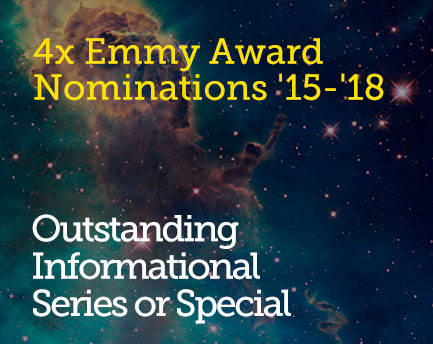February 11, 2017 10:00 pm
For the Love of Science: A Valentine’s Day Love Letter to the Spirit of Rational Inquiry.
Today’s guest blog post is by StarTalk intern Kirk Long. Kirk is majoring in physics while minoring in mathematics and piano at Idaho State University.
My relationship with science started as a young child, when – before I could even talk – I performed “experiments” on the tastes of random objects I probably shouldn’t have been putting in my mouth. My parents had travelled a lot in Europe before they had me, probably to celebrate the last time in their lives they would be able to leave the continent without worrying about their kids, and they had brought back with them a variety of exotic coins that sat in our change bowl. Young and curious, I decided it would be a great idea to perform experiments using said coins to see if I could tell them apart, and one of the criteria I used was taste. I remember placing the different coins in my mouth and trying to guess which one it was, and then I remember wanting to look at said coin in my mouth in the mirror. So I got up on the stepstool to see myself in the mirror above the kitchen sink, but quickly encountered a problem. When I stuck out my tongue, it was relatively level and thus I could only see the thin edge of the coin, and not how it really looked in my mouth. Being very young, I was still figuring out how things like mirrors worked, and I knew that mirrors appeared to flip actions. I stood there for a while — my tongue hanging out deep in thought — and ultimately decided I would need to lift my tongue up to see the coin, because the mirror would show the reverse right? Wrong. I quickly realized my mistake when the foreign piece of metal became lodged in my esophagus, and I shamefully walked into my mother to tell her that I had been performing experiments again and we might need to go to the emergency room.
Why am telling you this story? In the spirit of Valentine’s Day, I thought it fitting to talk to you about my first and most important love — science. Whether you are in a human relationship or not, I’m sure StarTalk listeners can agree that we are each of us lovers of science. For your Valentine’s Day present from StarTalk, I’ve picked a few of the most important scientific events that happened around this time in February (presented in no particular order), to celebrate our love of scientific discovery.
2/14/1990 — Voyager 1 takes the famous Pale Blue Dot picture
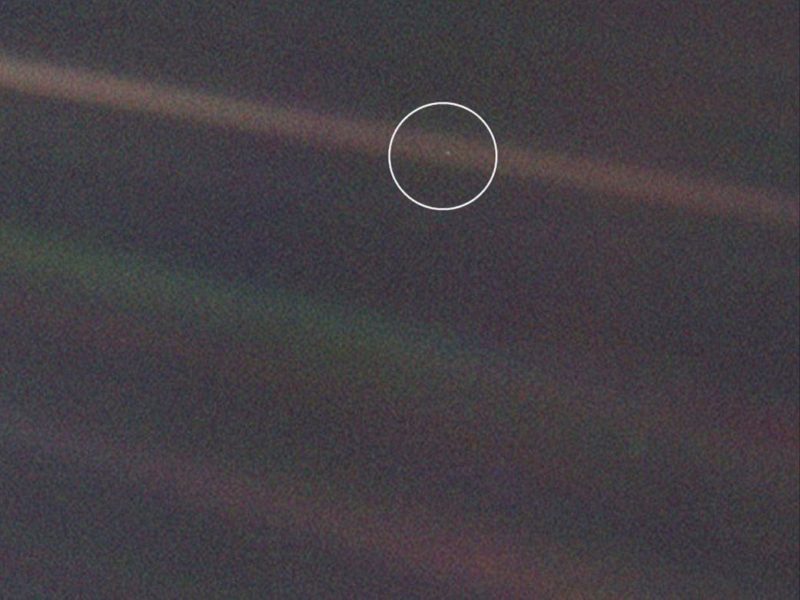
Taken from more than 4 billion miles, the Earth is seen here as a “mote of dust suspended in a sunbeam.” — Carl Sagan
Perhaps the most famous picture ever taken in the history of astronomy, the Pale Blue Dot photograph has been a rallying cry for scientists everywhere as a testament to the importance of their work. It’s fitting that the photo was taken on Valentine’s Day, because it embodies our collective love for exploration as well as the beautiful fragility of the cosmos and the tiny part our world plays in it. Carl Sagan wrote the book on why this picture is so important, and if you’ve never read the famous excerpt from his book Pale Blue Dot or just want to enjoy it again, check out the “Pale Blue Dot” text here.
2/13/1974 — Sagittarius A* Discovered
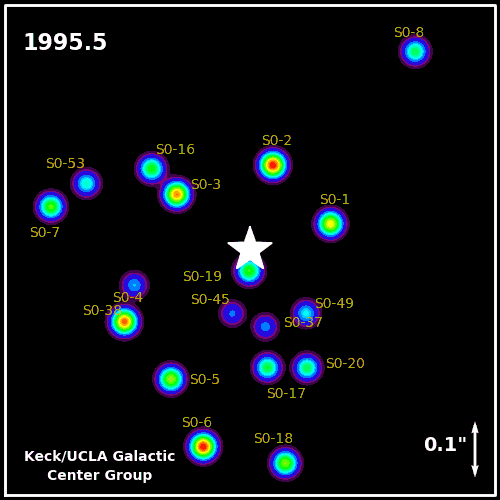
Updated version of further observation of the stars closely surrounding Sagittarius A*. Watch the original results from 2002 here: https://www.youtube.com/watch?v=u_gggKHvfGw
Using two observations made before and after Valentine’s Day (2/13/1974 and 2/15/1974), astronomers Bruce Balick and Robert Brown first pinpointed the source of strong radio signals emanating from the center of our galaxy. Brown was so excited by the discovery that he coined the name Sagittarius A* –partly for the constellation in which it resides, with an asterisk added because it was an incredibly exciting signal, and excited atomic states are commonly denoted with asterisks. Almost 30 years later in 2002, astronomers — who had trained watchful telescopes on the anomaly for 10 years — reported that the motion of stars near the signal source could only be explained by the presence of a massive black hole, largely confirming what had already been suspected. Astronomers now estimate its mass to be more than four million times that of our sun, with a radius of 45 AU — if it were placed in our solar system it would extend just past the orbit of Pluto. There’s still a lot of unknowns about Sagittarius A* and other black holes, but it’s an exciting field of study that NASA and other agencies are actively working to uncover — most notably with the CHANDRA mission.
2/11 — Thomas Edison’s birthday (and National Inventors’ Day)
Whatever your personal feelings about Thomas Edison (and Nikola Tesla – see this Oatmeal comic for a good description of how I feel about them) he was nonetheless an important figure in the advancement of science. Edison is credited most famously for perfecting the lightbulb and the electrical system to power it — DC current — but he also was a pioneer in sound and video, inventing the phonograph and contributing significantly in the development of the first motion pictures. Although Edison’s DC current lost out to Tesla’s AC current in the race to build America’s power grid, DC current is still used by all of us every day whenever we plug anything into our outlets at home.
2/14/2000 — NEAR Shoemaker enters Eros orbit
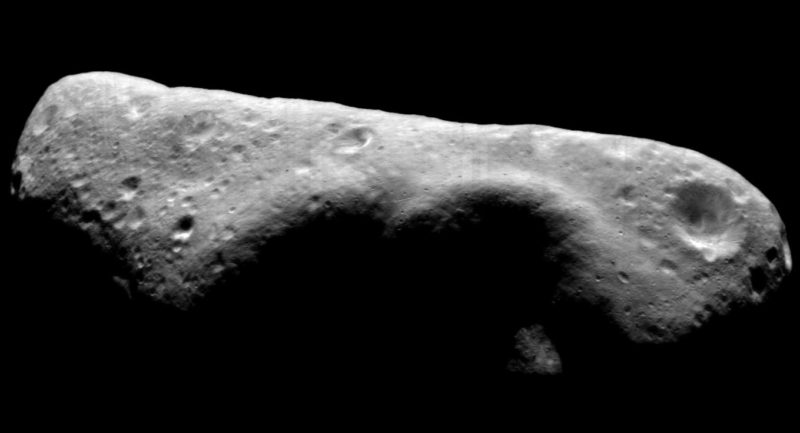
Image of Eros’ southern hemisphere taken on November 30, 2000. The eventual landing site of the probe is just inside the shadows, slightly to the left of center. Eros is 21 miles (33 kilometers) long and with a diameter about 10 miles (17 kilometers). Credit: NASA/JPL.
NEAR Shoemaker is one of NASA’s best love stories — the first human-made object to orbit an asteroid (an asteroid named for love!) — and later land on it. Despite being set back with several delays, NEAR Shoemaker was ultimately a resounding success — collecting 10 times more data than originally planned and providing some of the most detailed and complete data ever collected about an asteroid. NEAR proved that asteroids like Eros were varied and exciting places, and that they weren’t just “piles of rubble” loosely floating together in space, but instead solid objects with a plethora of resources that we might one day be able to exploit. (In SyFy’s popular new show The Expanse humans have hollowed out Eros and use it as a mining outpost).
2/15 — Galileo birthday (or 2/16 with new calendar)
Galileo is my favorite astronomer because he definitively proved that we weren’t the center of the universe. Through his primitive telescope he was able to observe “oceans” (maria) on the moon, the phases of Venus, Jupiter’s four Galilean moons, and even the Sun itself (which really hurt his vision, and I don’t recommend trying at home without a good solar filter — check out this one you can mount on any telescope for less than $20, a good Valentine’s Day gift for the amateur astronomer in your life). Galileo resisted intimidation and persecution by the Catholic Church of his day to protect pure scientific inquiry, and in doing so has become one of the most renowned and respected figures in science history, as well as proving his true love to the cause.
2/18/1930 — Clyde Tombaugh discovers Pluto
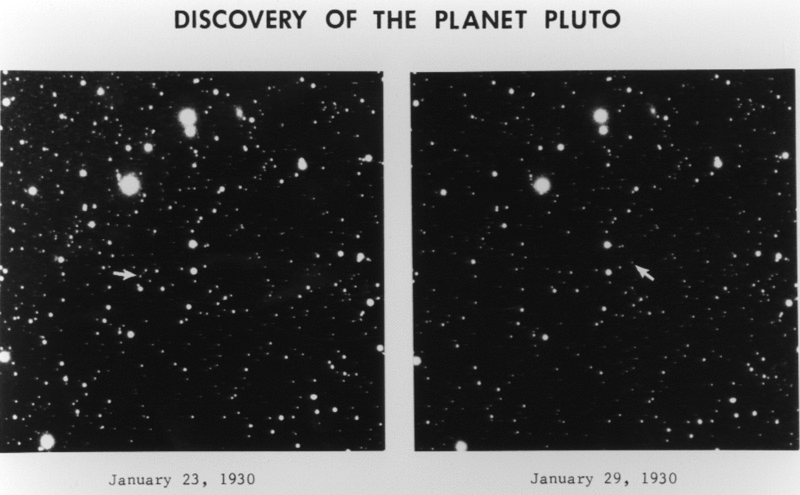
This picture from the Lowell Observatory Archives shows two images taken by Tombaugh towards the end of January with a 13 inch telescope, with the arrows pointing to Pluto. How did he spot that tiny speck? Try for yourself using the blink comparator method Tombaugh used: http://pluto.jhuapl.edu/common/content/BlinkComparator/blinkComparator.html. Although Pluto is now classified as a dwarf planet, it hasn’t stopped fascinating and exciting us since its discovery 87 years ago.
Can you spot Pluto in these two images? These were some of the first plates taken by Clyde Tombaugh as he searched for a mysterious object that scientists had predicted existed yet was very elusive. When the New Horizons probe flew by Pluto more than 85 years later we confirmed that this icy world was a beautiful place — and it’s especially fitting for Valentine’s Day with its heart shaped “Sputnik Planum.” Since Pluto was discovered, it hasn’t even completed half an orbit around the sun — its first “birthday” won’t be until the end of 2177 — and it’s more than 9 light hours away from Earth. Despite its cold and desolate position in the solar system, New Horizons found evidence of an active and changing landscape, and even a thin atmosphere. Scientists will be pouring over data from New Horizons for years to come, unlocking the spectacular mysteries of Pluto and our early solar system.
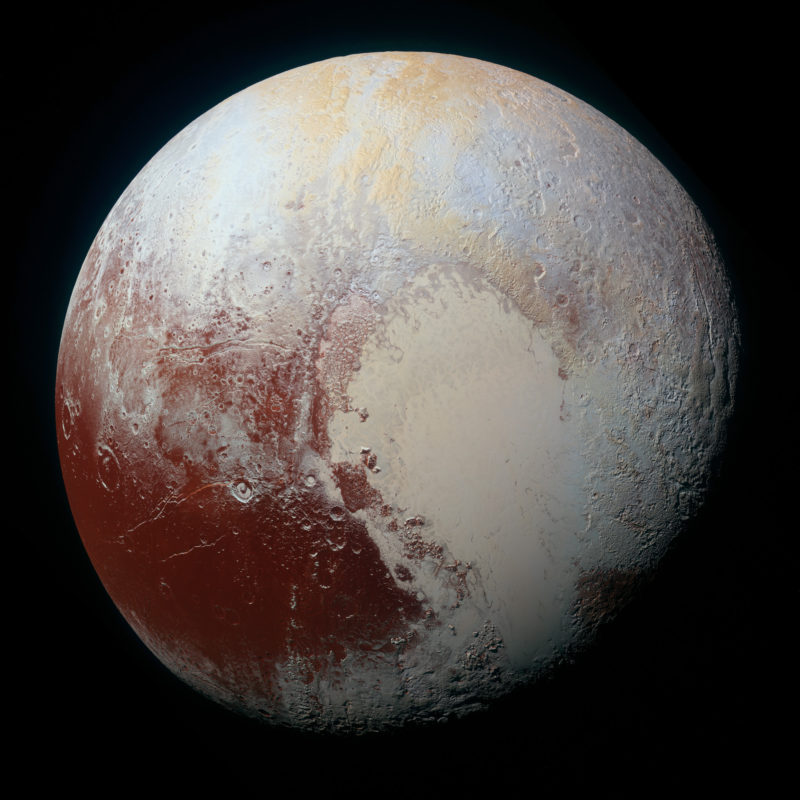
Pluto’s “Heart.” Credits: NASA/APL/SwRI.
Did we miss something? Share with us the reasons you love science this Valentine’s Day, and remember to always stay passionately curious.
Get the most out of StarTalk!
Ad-Free Audio Downloads
Priority Cosmic Queries
Patreon Exclusive AMAs
Signed Books from Neil
Live Streams with Neil
Learn the Meaning of Life
...and much more

 Become a Patron
Become a Patron

